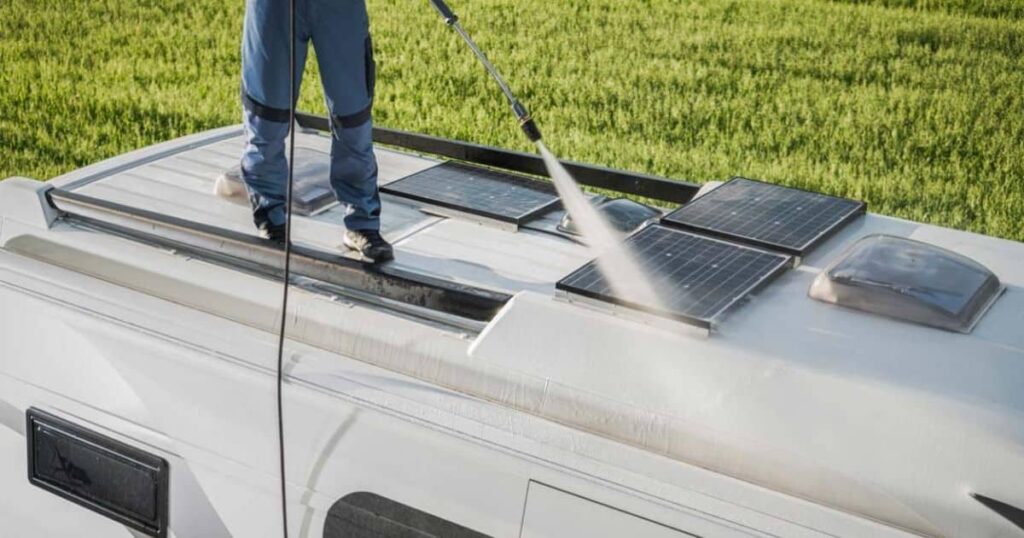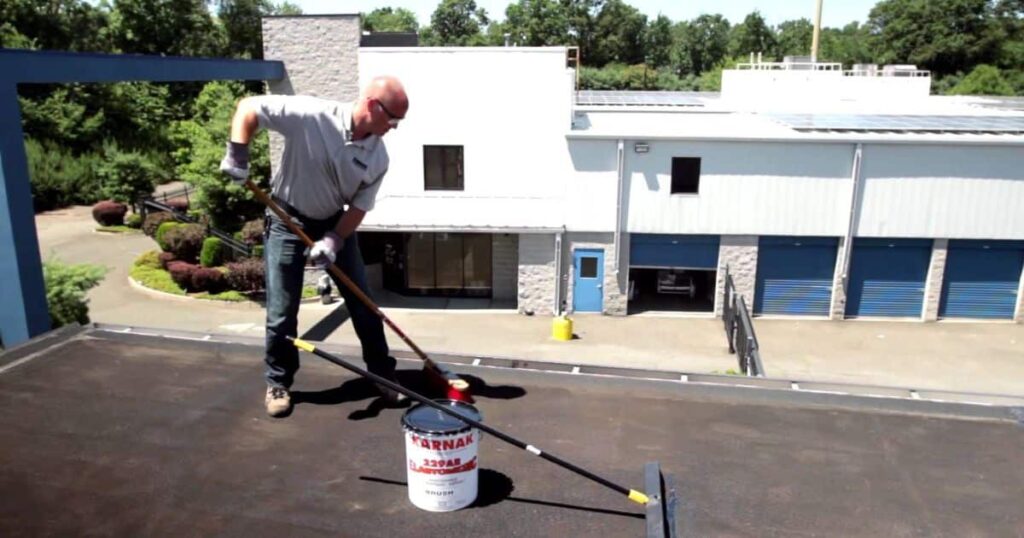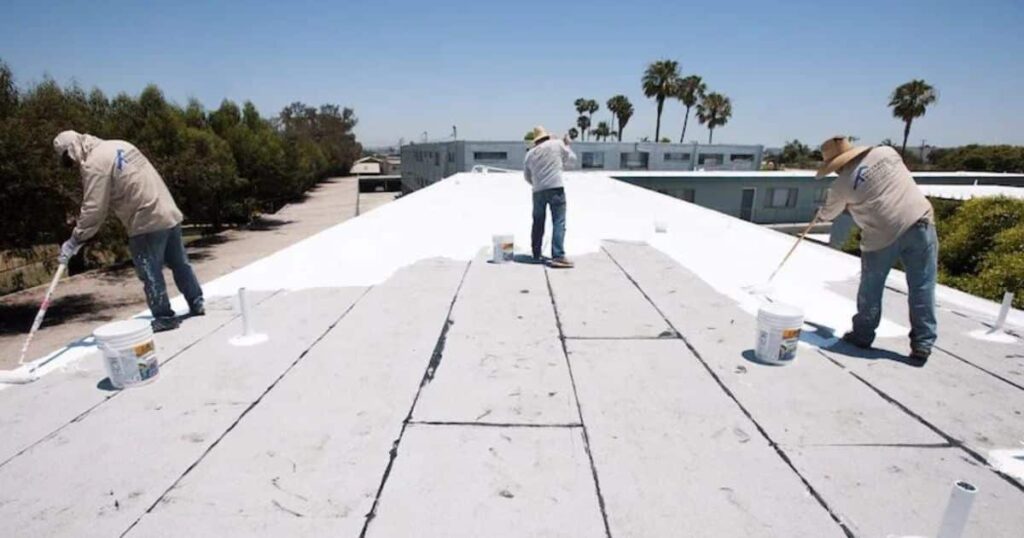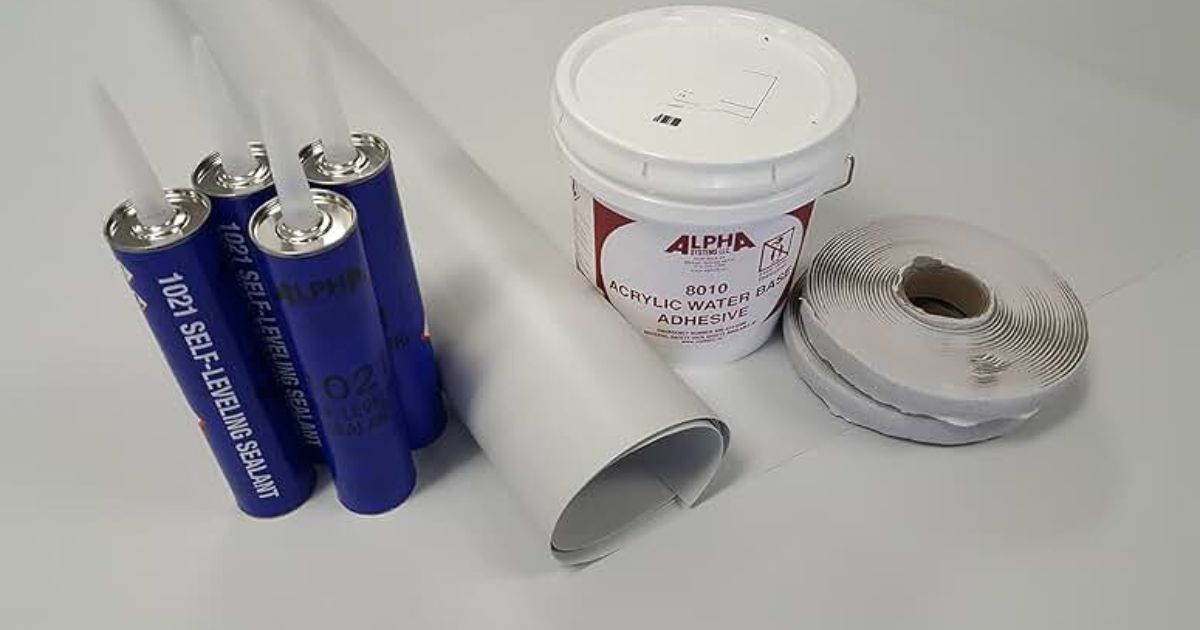When it comes to preserving the integrity and longevity of your Newmar RV, one key aspect that often goes overlooked is the maintenance of its rubber roof sealant. The right sealant not only protects your RV from external elements but also ensures that the interior stays in pristine condition. In this comprehensive guide, we will delve into the significance of white rubber roof sealant for Newmar RVs, its unique features, and step-by-step instructions on applying and maintaining it for optimal performance.
Understanding the Importance of Newmar RV White Rubber Roof Sealant
Newmar RVs are renowned for their quality and durability, and the white rubber roof sealant plays a crucial role in maintaining these standards. The sealant serves as a protective barrier against harsh weather conditions, UV rays, and environmental pollutants that can deteriorate the roof’s integrity over time. By forming a watertight seal, it prevents leaks and water damage, safeguarding the interior of your RV from potential harm.
What Is a Newmar RV Rubber Roof Made Of?
Understanding the composition of a Newmar RV’s rubber roof is essential for proper maintenance and care. Newmar, a brand synonymous with quality and innovation, utilizes materials in its RV roofing systems that are not only durable but also designed to withstand the rigors of outdoor adventures. Let’s delve into the specifics of what a Newmar RV rubber roof is made of.
EPDM (Ethylene Propylene Diene Monomer)
EPDM is a synthetic rubber compound widely used in the manufacturing of RV roofs, including those by Newmar. Known for its excellent durability, EPDM is highly resistant to UV rays, weathering, and ozone exposure. This makes it an ideal material for RV roofs that are constantly exposed to varying weather conditions.
EPDM rubber roofs offer impressive flexibility, allowing them to expand and contract with temperature fluctuations without compromising their structural integrity. This flexibility is crucial for preventing cracks and leaks over time, providing a reliable barrier against water intrusion.
TPO (Thermoplastic Olefin)
Some Newmar RV models feature roofs constructed with TPO, a type of thermoplastic material known for its lightweight and energy-efficient properties. TPO roofs are resistant to UV radiation, reducing heat absorption and contributing to improved energy efficiency within the RV.
TPO is also praised for its resistance to mold, mildew, and general wear and tear. Newmar incorporates TPO roofs in certain models to provide an alternative roofing solution that combines durability with energy-saving features.
Fiberglass Reinforcements
To enhance the structural strength of the rubber roof, Newmar often incorporates fiberglass reinforcements into the roofing material. Fiberglass adds rigidity and stability to the roof, reducing the risk of sagging and promoting a longer lifespan for the RV’s roofing system.
The combination of EPDM or TPO with fiberglass reinforcements creates a robust roofing structure that can withstand the dynamic stresses experienced during travel and exposure to the elements.
Seams and Overlapping Layers
Newmar pays meticulous attention to the construction of seams and overlapping layers in its rubber roofs. These details are crucial for ensuring a watertight seal, preventing leaks and water damage. The seams are often sealed with advanced adhesives or sealants, providing an extra layer of protection against environmental factors.
The careful design of seams and overlapping layers also contributes to the overall aesthetics of the RV, creating a sleek and streamlined appearance while maintaining the roof’s functionality.
How Do I Protect My Newmar RV Rubber Roof?

Preserving the longevity of your Newmar RV’s rubber roof is paramount to ensuring a comfortable and worry-free travel experience. The rubber roof is a critical component of your RV, providing protection against the elements and maintaining the structural integrity of the vehicle. To safeguard this crucial asset, follow these essential steps to protect and maintain your Newmar RV rubber roof:
1. Regular Inspections
Conduct regular inspections of your RV’s rubber roof to identify any signs of wear, tears, or damage. Inspect seams, edges, and around fixtures such as vents and air conditioners. Early detection of issues allows for timely repairs, preventing further damage.
2. Clean the Roof Surface
Keep your rubber roof clean by regularly washing it with a mild cleanser specifically designed for RV roofs. Avoid harsh chemicals or abrasives that could damage the rubber material. Cleaning not only enhances the appearance but also prevents the buildup of dirt and debris that can degrade the roof over time.
3. Use a UV Protectant
UV rays from the sun can accelerate the aging process of rubber roofs. Apply a quality UV protectant to shield the rubber from harmful ultraviolet radiation. This protective layer helps maintain the roof’s flexibility and prevents cracking and deterioration.
4. Choose the Right Sealant
Opt for a high-quality white rubber roof sealant, as discussed in the previous section, to create a robust barrier against water and environmental elements. Regularly inspect the sealant for any signs of wear and reapply as needed to ensure continuous protection.
5. Address Leaks Promptly
If you notice any signs of water infiltration or leaks, address them promptly. Ignoring leaks can lead to extensive damage to the interior of your RV. Locate the source of the leak and repair it using an appropriate sealant or patching material.
6. Avoid Walking on the Roof Unnecessarily
While rubber roofs are designed to be durable, unnecessary foot traffic can cause damage over time. Minimize walking on the roof, especially during extreme temperatures when the rubber is more susceptible to wear. Use a sturdy ladder for inspections and maintenance tasks.
7. Trim Overhanging Branches
Overhanging branches can pose a threat to your RV’s rubber roof, causing scratches, tears, or more severe damage. Trim back any branches that could come into contact with the roof during travel or when parked.
8. Store Properly When Not in Use
When your Newmar RV is not in use, consider storing it in a covered area or using an RV cover. This provides an extra layer of protection against the elements, preventing prolonged exposure to sun, rain, and other environmental factors.
9. Follow Manufacturer Recommendations
Always adhere to the manufacturer’s recommendations and guidelines for maintenance and protection. Different RV models may have specific requirements, and following these guidelines ensures that you are taking the best possible care of your Newmar RV’s rubber roof.
10. Consult Professional Services
If you are unsure about any aspect of maintaining or protecting your RV’s rubber roof, consider consulting professional RV maintenance services. They can provide expert advice, conduct thorough inspections, and perform necessary repairs to keep your rubber roof in optimal condition.
By incorporating these steps into your routine RV maintenance, you’ll not only protect your Newmar RV’s rubber roof but also contribute to the overall longevity and performance of your cherished recreational vehicle. Regular care and attention to your RV’s roof will pay off in the form of worry-free travels and countless memorable adventures on the road.
What Are the Best Newmar RV Rubber Roof Protectants?

Preserving the longevity of your Newmar RV’s rubber roof goes beyond the initial application of a quality sealant. To ensure lasting protection against the elements, it’s crucial to explore the best rubber roof protectants available in the market. These protectants not only enhance the effectiveness of the sealant but also provide additional layers of defense against UV rays, weathering, and environmental contaminants.
Choosing the Right Rubber Roof Protectant
When selecting a rubber roof protectant for your Newmar RV, consider the following factors to make an informed decision:
Compatibility: Ensure that the protectant is compatible with the type of rubber material used in your RV’s roof. Different RV manufacturers may use different rubber formulations, so it’s essential to choose a protectant that complements the specific requirements of your Newmar RV.
UV Resistance: Look for protectants with UV-resistant properties. UV rays from the sun can accelerate the deterioration of rubber surfaces, leading to fading and cracking. A reliable protectant with UV inhibitors helps shield the rubber roof from the damaging effects of prolonged sun exposure.
Water Repellency: Opt for a protectant that enhances water repellency. Water is a common adversary for RV roofs, and a protectant that creates a hydrophobic barrier helps repel water, preventing it from seeping into seams and causing potential damage.
Ease of Application: Choose a protectant that is easy to apply. Whether it comes in a spray, liquid, or gel form, a user-friendly application process ensures that RV owners can easily maintain their roofs without unnecessary complications.
Long-Lasting Formulation: The best rubber roof protectants are formulated to provide long-lasting protection. A product with a durable formulation minimizes the frequency of reapplication, saving you time and effort in the long run.
Mold and Mildew Resistance: Consider a protectant that includes properties to resist the growth of mold and mildew. Mold and mildew not only compromise the aesthetics of the RV roof but can also lead to structural issues if left unchecked.
Top Picks for Newmar RV Rubber Roof Protectants
Dicor RP-RC-1GL Rubber Roof Cleaner and Protectant:
- Compatible with EPDM and TPO rubber roofs.
- UV-resistant formula to prevent sun damage.
- Provides water repellency for enhanced protection.
- Easy spray-on application.
303 Products 303 Aerospace Protectant:
- Suitable for a variety of surfaces, including rubber.
- Offers superior UV protection to prevent fading and cracking.
- Restores and maintains a like-new appearance.
- Easy to apply with a spray or cloth.
Thetford Premium RV Rubber Roof Cleaner and Conditioner:
- Specially formulated for rubber RV roofs.
- Provides UV protection and water repellency.
- Conditions the rubber to prevent drying and cracking.
- Easy application with a simple spray-on process.
Protect All 68128 Rubber Roof Treatment:
- Designed for EPDM and TPO rubber roofs.
- UV-resistant formula to guard against sun damage.
- Enhances water repellency for added protection.
- Long-lasting formulation reduces the need for frequent reapplication.
Application Tips
Clean the Roof Thoroughly: Before applying a rubber roof protectant, ensure that the roof is clean and free from dirt, grime, and any previous protectant residue. Use a compatible cleaner for optimal results.
Follow Manufacturer’s Instructions: Each rubber roof protectant may have specific application instructions. It’s crucial to follow the manufacturer’s guidelines for the best results and to avoid any potential issues.
Regular Maintenance: Apply the rubber roof protectant as part of your regular RV maintenance routine. Periodic applications help maintain the integrity of the rubber roof and extend its lifespan.
By selecting a high-quality rubber roof protectant and incorporating it into your RV maintenance regimen, you can enhance the durability of your Newmar RV’s rubber roof, ensuring that it remains resilient against the challenges posed by the road and the elements.
Features of the Best Newmar RV White Rubber Roof Sealant
Choosing the right white rubber roof sealant for your Newmar RV is essential for ensuring optimal protection and longevity. Here are some key features to look for when selecting the best sealant for your RV:
UV Resistance: The best sealants are formulated with UV-resistant properties, preventing the rubber roof from degrading under prolonged sun exposure. This feature is particularly crucial for RVs that spend extended periods outdoors.
Flexibility and Elasticity: A quality white rubber roof sealant should be flexible and elastic, allowing it to expand and contract with the RV’s movement. This flexibility ensures that the sealant remains intact, even during temperature fluctuations, preventing cracks and leaks.
Waterproofing: The primary purpose of a rubber roof sealant is to create a waterproof barrier. Look for sealants that have excellent waterproofing properties to shield your RV from rain, snow, and other forms of moisture.
Mildew and Mold Resistance: Moisture can lead to the growth of mold and mildew, causing structural damage and health hazards. A good sealant should possess properties that resist the development of mold and mildew, maintaining a clean and healthy interior environment.
Easy Application: Opt for a sealant that is easy to apply, either with a brush, roller, or spray. This ensures a hassle-free application process, saving you time and effort during maintenance.
Longevity: The best sealants offer long-lasting protection. Consider products with a proven track record of durability and longevity to minimize the frequency of reapplications.
Step-by-Step Guide to Applying Newmar RV White Rubber Roof Sealant

Now that you understand the importance of the white rubber roof sealant for your Newmar RV, let’s walk through a step-by-step guide on how to apply and maintain it effectively:
1. Clean the Roof Surface
Before applying the sealant, ensure that the roof surface is clean and free from dirt, debris, and other contaminants. Use a gentle cleanser or RV roof cleaner to remove any existing residue.
2. Inspect for Damage
Thoroughly inspect the rubber roof for any signs of damage, such as cracks or tears. Address any issues before applying the sealant to ensure optimal coverage and protection.
3. Choose the Right Sealant
Select a high-quality white rubber roof sealant that aligns with the features mentioned earlier. Check the manufacturer’s recommendations for compatibility with Newmar RVs.
4. Prepare the Sealant
Follow the manufacturer’s instructions for preparing the sealant. Some may require stirring, while others come ready to use. Ensure the sealant is at the right consistency for easy application.
5. Apply the Sealant
Using a brush, roller, or spray applicator, apply the sealant evenly across the entire roof surface. Pay extra attention to seams, vents, and other potential weak points. Work methodically to cover the entire area.
6. Allow for Drying Time
Allow the sealant to dry completely before exposing the RV to the elements. Drying times may vary based on the product and weather conditions, so consult the manufacturer’s guidelines.
7. Regular Inspections
Perform regular inspections of your RV’s roof to identify any signs of wear or damage. Promptly address any issues by reapplying the sealant as needed.
8. Clean and Maintain
Periodically clean the roof with a gentle cleanser to remove dirt and debris. This not only enhances the RV’s appearance but also ensures that the sealant remains effective.
Frequently Asked Questions
What is the best sealant for RV rubber roof?
The best sealant for an RV rubber roof is a high-quality, RV-specific sealant recommended by the manufacturer.
Can you seal a rubber roof on an RV?
Yes, you can seal a rubber roof on an RV using a suitable RV sealant to protect against leaks and damage.
What is the difference between RV roof coating and sealant?
The main difference between RV roof coating and sealant is that coating provides a protective layer, while sealant is used to fill and seal gaps or seams.
Is liquid rubber good for RV roofs?
Yes, liquid rubber is a good option for RV roofs, offering a durable and flexible seal to protect against the elements.
Conclusion
Investing time and effort into the proper maintenance of your Newmar RV’s white rubber roof sealant is a proactive step toward preserving the overall condition of your recreational vehicle. By understanding the importance of quality sealants and following a systematic approach to application and maintenance, you can extend the lifespan of your RV and enjoy worry-free adventures on the road. Choose the best sealant for your Newmar RV, and embark on your journeys with confidence, knowing that your RV is equipped with the protection it deserves.











